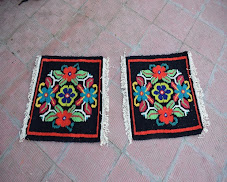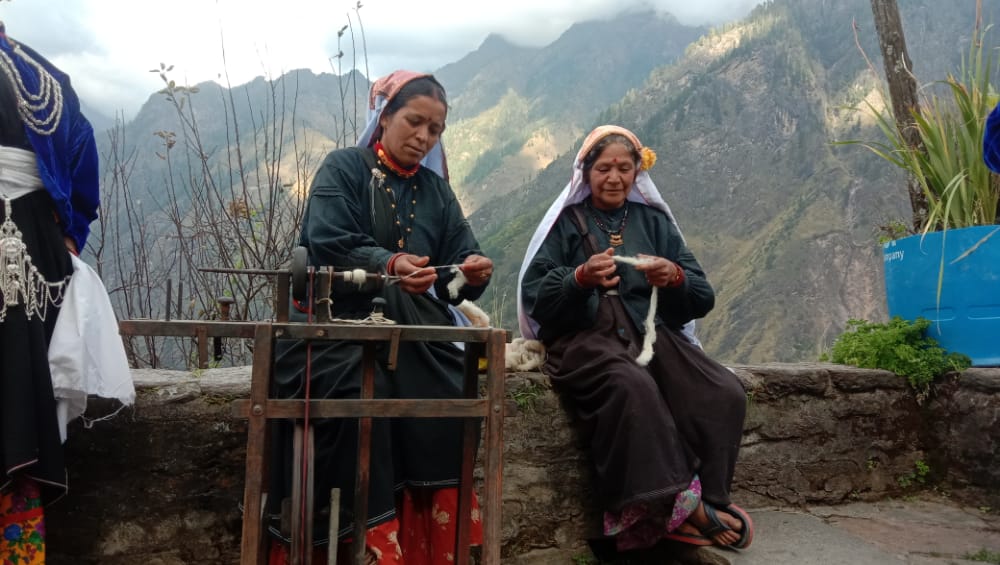Sewa Mahila Jyoti |
Sewa Mahila Jyoti is an initiative for women empowerment through turning skill into a livelihood. The activities are based around creating livelihood opportunities through local arts and crafts. In a rain-fed country like ours when global warming is on the rise and farmer suicides due to crop failure are rampant, we need to find solutions to problems occurring from crop failure or climate calamities. Apart from investing technologies in increasing the resilience to climate change, we also need to think out of the box to provide more alternate means of livelihood to the farming community and especially women. This serves the twin purpose of making women financially independent by strengthening the SHG network and also boosting the local crafts by skill development of the masses. In creating such impacts on the lives of the people in Uttarakhand, organisations like ONGC Foundation and SIDBI are actively supporting us. |
Woolens of Bootiyas
The Bhotiyas are high altitude nomadic people of the Himalayan region. During earlier times their primary occupation was sheep and goat rearing. Travelling between the high and low Himalayan region they also got attached to the Indo- Tibetan trade route. But after the Indo-China War of 1962 the trade route closed and they settled on this side of the border. They had to look for alternate sources of livelihood and maybe that was the key factor that led to the creation of a demand for these traditional woolens which were previously made for personal use only. They were highly skilled at it and enjoyed monopoly in the business for quite some time as their products were of high quality and were long lasting.
The raw material which they used for making the craft was the wool of local sheep which is relevant in today’s increasing awareness and action regarding sustainable fashion reducing the carbon However, a major shift in the lives of the Bhotiyas impacted the craft itself. With the availability of cheaper and synthetic substitutes in the market, the demand for these handwoven products reduced drastically. Even the availability of new job opportunities with fixed income drove the youth further away from the craft. |
The Craft
Tracing back in time it is believed that the need for comfort and the availability of wool gave birth to the craft. Traditionally women who are the primary workforce of the family used to rear sheep, card wool, spin yarn out of wool and weave shawls, dun and asanas. With the passing of time, the craft may have lost its once flourishing market but its usage is still relevant amongst the people. Every Bhotiya household is a storehouse of beautiful duns and asanas. Even today when a girl gets married, a pair of traditional asanas, duns and pankhis are included in her trousseau. Over the years weaving has become an essential part of the Bhotiya lifestyle. Women now collect wool from sheepherders; cleanse it; make spheres of wool; spin yarn from wool and weave. They do it in their leisure time and the products are primarily made for household usage. |
Design
The designs found in the craftwork are mostly made from memory. Sometimes they also get designs by working on graphs. Usually, the designs comprise of a border with four corner motifs and one or two center motifs. Gyanak Boota (Swastika Flower), Bada Boota (Big Flower), Sankli (Chain) etc. are the most common motifs used in the center. Like other communities, the Bhotiyas also consider Swastika very auspicious. Often three circular motifs are woven in the central area enclosed with borders. The border is a very important element in Bhotiya woolen work and can go up tp 8” in width.
|
Our Products
|
Gallery |

.png)

















%20(1).jpeg)